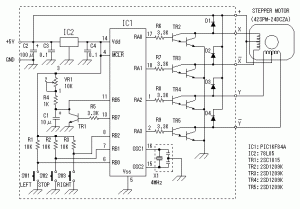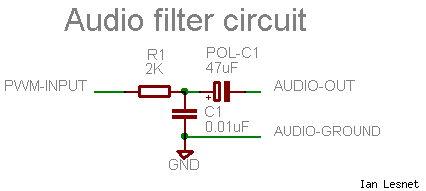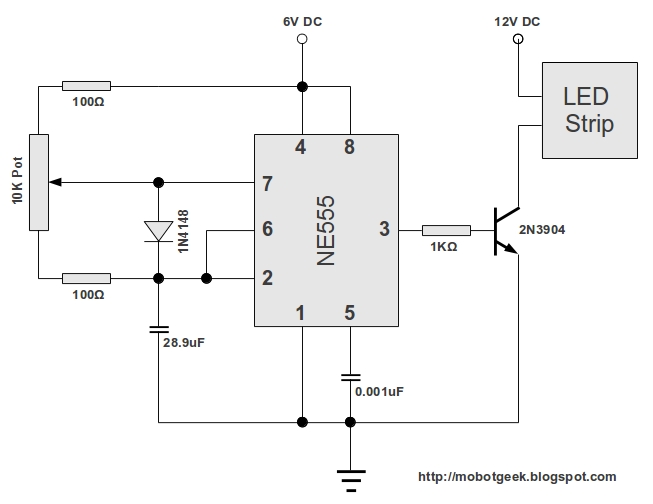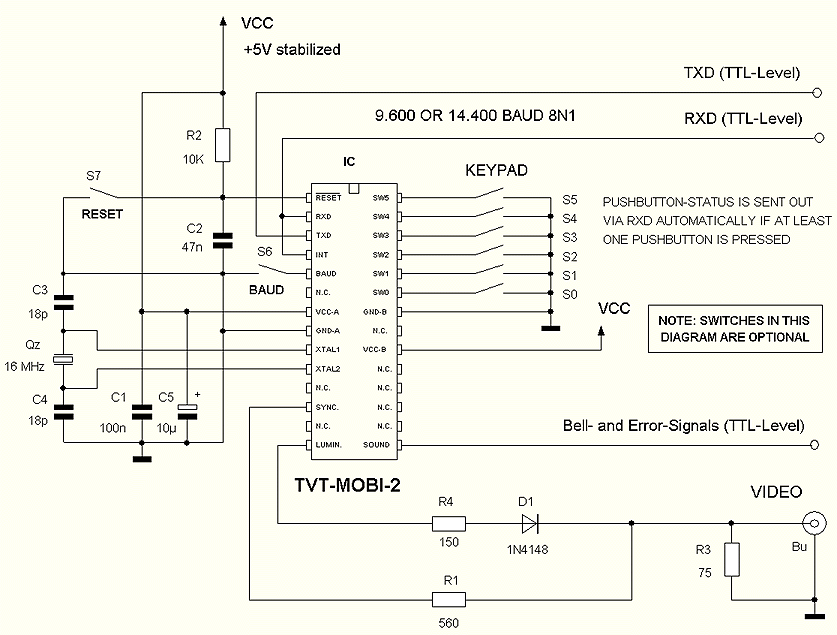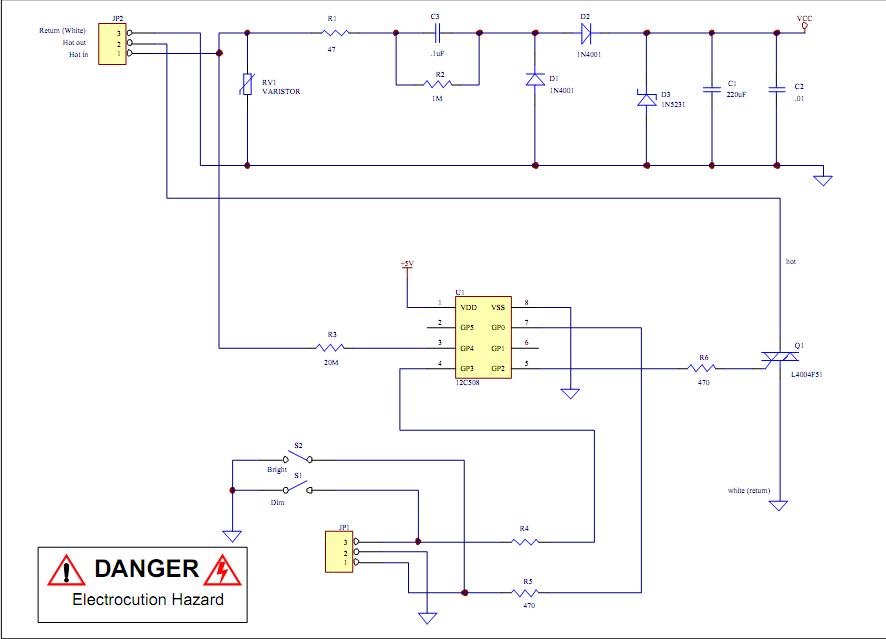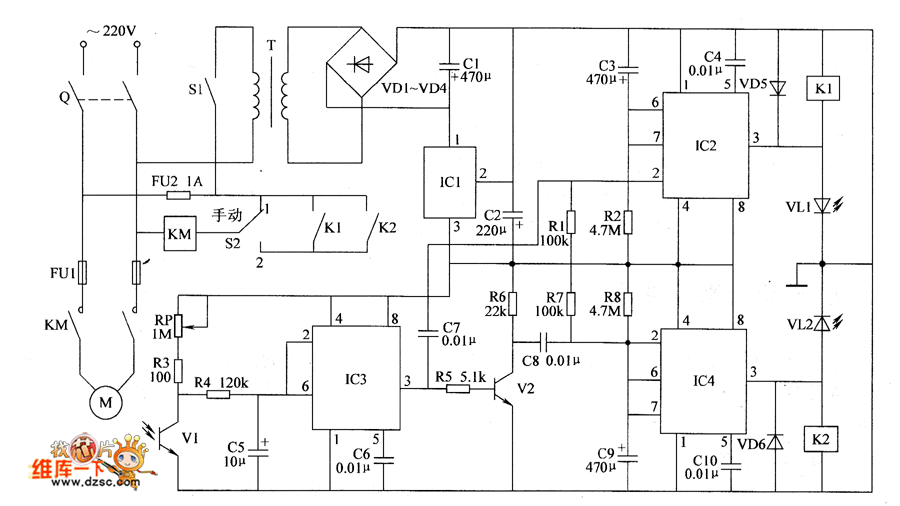
Cheap Pump Controller

This straightforward yet efficient circuit is designed to manage the water level in a container. The prototype is utilized to pump water out of a bucket that collects condensation from a home air-conditioning system. The design revolves around a 555 timer (IC1). Although the timer is configured in a monostable mode, it does not include the usual timing capacitor connected from pin 6 to ground. Instead, a metal probe inserted in the water creates a current path to a second grounded probe. When the water level in the container reaches a third ("high") probe, the trigger input (pin 3) is pulled low, causing the 555 output to go high and energizing the relay through transistor Q1. Once the water level falls below the "low" probe, the threshold input (pin 6) swings high, resulting in the output (pin 3) going low, and turning off the relay and pump. The two 100kΩ pull-up resistors can be substituted with larger values for increased sensitivity if the 555 timer fails to trigger. A switch (S1) can be added to bypass the relay for manual emptying. The "low" probe should be positioned to prevent the pump from running dry, while the high-level probe should be set at the desired level for pump activation. Given that the water is at ground potential, stainless steel or copper wire should be used to minimize corrosion. With water fountain pumps available for under $10, this circuit presents an economical solution for individuals with air-conditioning units located on internal walls, eliminating the need for constant bucket emptying on humid days.
This water level control circuit employs a 555 timer in a monostable configuration, which is a versatile and widely used integrated circuit in various applications. The circuit operates by utilizing two probes submerged in the water: a high-level probe and a low-level probe. The high-level probe is set at the desired water level, while the low-level probe prevents the pump from running dry, ensuring the longevity of the pump and the system's reliability.
When the water level rises to the high-level probe, it creates a conductive path that triggers the 555 timer's input (pin 3), causing the output to go high. This output activates transistor Q1, which, in turn, energizes the relay connected to the pump. The relay serves as a switch that controls the power supply to the pump, allowing it to operate only when necessary.
As the water is pumped out and the level drops below the low-level probe, the threshold input (pin 6) of the 555 timer detects the change, causing the output to go low. This action deactivates the relay, stopping the pump and preventing any potential damage from running dry.
To enhance the circuit's sensitivity, the pull-up resistors can be adjusted. This flexibility allows for customization based on the specific characteristics of the probes and the water conditions. The addition of a manual switch (S1) provides an option for users to bypass the automated system for manual operation, which may be useful for maintenance or troubleshooting.
The choice of materials is critical in this design; therefore, using stainless steel or copper for the probes is recommended to combat corrosion, which can significantly affect the circuit's performance over time. This design offers a cost-effective solution for managing condensation from air-conditioning units, especially in environments where frequent emptying of collection buckets is impractical. Overall, this circuit combines simplicity with functionality, making it an ideal choice for home automation projects focused on water management.This simple but effective circuit can be used to control water level in a container. The prototype is used to pump water out of a bucket that collects condensation from a home air-conditioning system. The design is based around a 555 timer (IC1). Although the timer in configured as a mono-stable, it lacks the usual timing capacitor from pin 6 to g
round. Instead, a metal probe inserted in the water provides a current path to a second, grounded probe. When the water level in the container reaches a third ("high") probe, the trigger input (pin 3) is pulled low, switching the 555 output high and energizing the relay via transistor Q1. Once the water level drops below the "low" probe, the threshold input (pin 6) swings high, switching the output (pin 3) low and the relay and pump off.
The two 100k © pull-up resistors can be replaced with larger values if more sensitivity is required (eg, if the 555 doesn`t trigger). A switch (S1) can be included to bypass the relay for manual emptying. The "low" probe should be positioned so that the pump doesn`t run dry. The high level probe is placed at the level that you want the pump to start. Since the water is held at ground potential, you must use stainless steel or copper wire to slow corrosion.
With water fountain pumps available for less than $10, this circuit offers a cheap alternative for those who have an air-conditioner on an internal wall and don`t want to be continually emptying the bucket on humid days. 🔗 External reference
This water level control circuit employs a 555 timer in a monostable configuration, which is a versatile and widely used integrated circuit in various applications. The circuit operates by utilizing two probes submerged in the water: a high-level probe and a low-level probe. The high-level probe is set at the desired water level, while the low-level probe prevents the pump from running dry, ensuring the longevity of the pump and the system's reliability.
When the water level rises to the high-level probe, it creates a conductive path that triggers the 555 timer's input (pin 3), causing the output to go high. This output activates transistor Q1, which, in turn, energizes the relay connected to the pump. The relay serves as a switch that controls the power supply to the pump, allowing it to operate only when necessary.
As the water is pumped out and the level drops below the low-level probe, the threshold input (pin 6) of the 555 timer detects the change, causing the output to go low. This action deactivates the relay, stopping the pump and preventing any potential damage from running dry.
To enhance the circuit's sensitivity, the pull-up resistors can be adjusted. This flexibility allows for customization based on the specific characteristics of the probes and the water conditions. The addition of a manual switch (S1) provides an option for users to bypass the automated system for manual operation, which may be useful for maintenance or troubleshooting.
The choice of materials is critical in this design; therefore, using stainless steel or copper for the probes is recommended to combat corrosion, which can significantly affect the circuit's performance over time. This design offers a cost-effective solution for managing condensation from air-conditioning units, especially in environments where frequent emptying of collection buckets is impractical. Overall, this circuit combines simplicity with functionality, making it an ideal choice for home automation projects focused on water management.This simple but effective circuit can be used to control water level in a container. The prototype is used to pump water out of a bucket that collects condensation from a home air-conditioning system. The design is based around a 555 timer (IC1). Although the timer in configured as a mono-stable, it lacks the usual timing capacitor from pin 6 to g
round. Instead, a metal probe inserted in the water provides a current path to a second, grounded probe. When the water level in the container reaches a third ("high") probe, the trigger input (pin 3) is pulled low, switching the 555 output high and energizing the relay via transistor Q1. Once the water level drops below the "low" probe, the threshold input (pin 6) swings high, switching the output (pin 3) low and the relay and pump off.
The two 100k © pull-up resistors can be replaced with larger values if more sensitivity is required (eg, if the 555 doesn`t trigger). A switch (S1) can be included to bypass the relay for manual emptying. The "low" probe should be positioned so that the pump doesn`t run dry. The high level probe is placed at the level that you want the pump to start. Since the water is held at ground potential, you must use stainless steel or copper wire to slow corrosion.
With water fountain pumps available for less than $10, this circuit offers a cheap alternative for those who have an air-conditioner on an internal wall and don`t want to be continually emptying the bucket on humid days. 🔗 External reference
